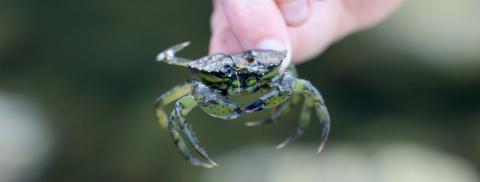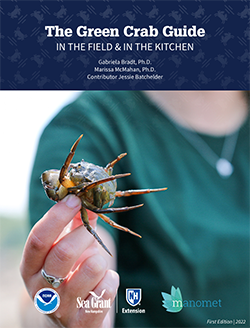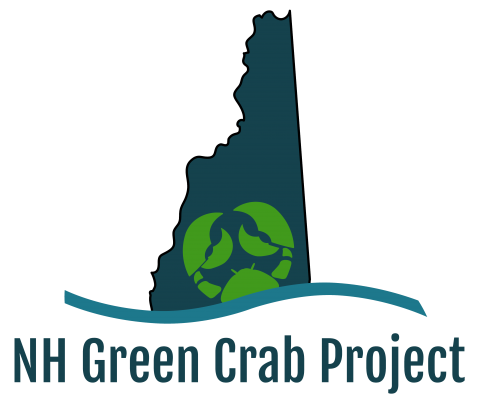
The European green crab, Carcinas maenas, is an invasive species of crab that has wreaked ecological and economic havoc along the New England coast for decades. As ocean temperatures have increased, the populations of these crabs continue to explode. Currently, there is no strategy in place to control the populations of green crabs, and there is no real commercial market or fishery for these invaders.
The most common use of these crabs is as bait. In recent years, there has been an increasing interest in developing markets and perhaps a fishery to help control green crab populations and bring their numbers down. Green crabs are edible although they are currently used to make soups and broths as they are smaller than other popular crabs (Dungeness, Rock and Jonah crabs) and there is not much meat yield per crab. To this end, the NH Green Crab Project, has been researching when green crabs molt in order to explore the feasibility of a soft-shell crab market (similar to blue crabs) and subsequently a potential fishery.
In recent years, the NH Green Crab Project is expanding to include a citizen science component to monitor, track and map the presence of male green crabs in the spring and female green crabs in the late summer to early fall in New Hampshire's estuarine and coastal areas. The goal of the project is to identify a clear window of time when male and female green crabs are molting as part of the exploration of the soft-shell green crab market and fishery in the Granite State.
NEW! Green Crab Guide
NH Sea Grant and our green crab project partner Manomet are excited to debut a The Green Crab Guide: In the Field & In the Kitchen. The comprehensive guide (26 pages) teaches green crab identification, molt status determination, culinary preparation, and includes 7 green crab recipes. VIEW/DOWNLOAD THE GUIDE

VIDEO: Harvesting Invasive Green Crabs
In York, Maine, Mike Masi is piloting a business that harvests soft-shell green crabs, putting the crabs to use. Dr. Gabriela Bradt, fisheries specialist for NH Sea Grant & UNH Extension, has been instrumental in sharing science-based techniques with prospective harvesters as the green crab fishery develops and market demand grows.
Get Involved
Join a Great Green Crab Hunt with Nature Groupie
Resources
- Soft-shell Green Crabs 101 Webinar (June 30, 2020)
- Visit anecdata.org to learn about our community/citizen science effort
- Find out more in our four-page identification and collection guide
- If you find a crab, please report your finding in our online data collection form
- Watch our FaceBook Live Video
- View green crab recipes and culinary guides
Media & Press
- "Harm to Table: Turning an Invasive Crab into a Delicacy" (Scientific American, October 30, 2019)
- "If you can't beat 'em - eat 'em" ("WCVB, May 20, 2019)
- "Scientists ask for public's help to count green crabs on the Seacoast" (New Hampshire Union Leader, May 14, 2019)
- "The Great Green Crab Hunt… and hunt for a new fishery" (NEOSEC News, March 9, 2019)
- "Attack of the Tiny Green Crabs" (One Fish Foundation, June 26, 2018)
- "Fighting back against the voracious green crab" (News Center Maine, June 6, 2018)
- "Coastal New Hampshire: Embracing an Invasive Species" (WCVB, May 23, 2018)
- "Chef and scientist urge: Eat more green crabs" (SeacoastOnline, May 8, 2018)
- "Serving up some off-the-beaten-path seafood" (WGME, May 14, 2018)
- "'Citizen-scientists’ needed to control green crabs" (SeacoastOnline, May 21, 2017)
- "Green Crabs are Maine's Most Delicious Scourge" (Down East, November 13, 2019)

